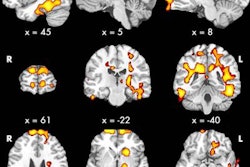Using MRI with an arterial spin labeling (ASL) sequence, researchers from the University of California, Los Angeles (UCLA) found that in youths with high-functioning autism spectrum disorder (ASD), brain areas linked to social behaviors are both underdeveloped and insufficiently networked.
The ASL-MR images show how the brains of children and adolescents with ASD might be organized differently than those without the disorder. Results of the study were published in the September issue of Brain and Behavior (Vol. 5:9).
Lead author Kay Jann, a postdoctoral researcher in UCLA's department of neurology, said in a statement that this is the first time ASL-MRI has been used to study autism spectrum disorder. ASL-MRI can quantify brain blood flow and, in this case, be used to assess the organization and strength of connections within the brain's intrinsic neural networks.
Jann and colleagues studied 17 youths with high-functioning autism spectrum disorder and 22 normal children and adolescents. Subjects were matched for age (7 to 17 years old), gender, and IQ scores. Children with ASD exhibited a pattern of widespread increased blood flow, also known as hyperperfusion, linked to increased oxygen metabolism in frontal brain areas that help children with social interactions.
The signs of continuing hyperperfusion in ASD youth suggest delayed neurodevelopment in these frontal brain regions, which are associated with socioemotional cognition.


.fFmgij6Hin.png?auto=compress%2Cformat&fit=crop&h=100&q=70&w=100)





.fFmgij6Hin.png?auto=compress%2Cformat&fit=crop&h=167&q=70&w=250)











